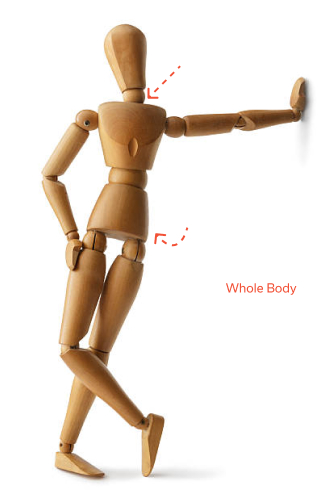Physiotherapy For Fractured Elbow - Ultimate Guide
By Estelle GohElbow injuries encompass a wide spectrum of conditions, ranging from tendonitis and fractures to nerve compression, arthritis, sports injuries, and overuse commonly seen in work settings.
An elbow fracture, being one of them, is more than just a broken elbow. It is a disruption to daily routines and a jolt to your independence. When not properly treated, it can lead to complications including limited range of motion, chronic pain, and even long-term disability.
In Singapore, shoulder injuries are more common among young athletes, but elbow fractures tend to be more severe. The primary factor leading to this injury is trauma, which commonly occurs due to incidents like a rolled elbow or direct impact on the elbow from falling or tripping. Children are also susceptible to such injuries, often following falls from heights like 'monkey bars', a prevalent hazard for kids in Singapore.

Physical therapy is a commonly sought treatment for an elbow fracture. Most people can regain full range of motion and strength with their elbow joint after a physiotherapy treatment, providing relief when stiffness persists long.
In this comprehensive guide, we'll understand the different types of elbow fractures, how they are diagnosed, and the physical therapy treatments that can help you recover and return to your normal activities.
What Is an Elbow Fracture?
An elbow fracture is a break in one or more of the elbow bones that make up the joint. They often result from a fall on an outstretched arm.
The elbow joint is a complex joint that allows for a wide range of motion, including bending, straightening, and rotation of the forearm. The three main bones involved in an elbow fracture are:
- Distal humerus (the lower end of the upper arm bone)
- Radial head (the upper end of the smaller forearm bone)
- Olecranon process (the bony tip of the ulna, the larger forearm bone)
Symptoms range from numbness to acute severe stiffness or pain in the elbow or forearm. It can usually be relieved with conservative treatments, but worse cases may need a surgical procedure.
3 Types of Elbow Fractures
There are three main types of elbow fractures, or bone fractures in general:
Type I (Nondisplaced Fracture)
In a Type I fracture, the bone sustains a break, but the fractured ends remain aligned in their normal anatomical position. This type of fracture generally maintains the overall shape and stability of the bone, making it easier to heal with minimal intervention. The continuity of the bone structure is preserved, and the surrounding tissues and joints are less likely to be affected compared to more severe fractures.
Type II (Displaced Fracture)
A Type II fracture involves a break where at least one fragment of the bone has shifted out of its normal alignment. This displacement can vary in degree, and the misalignment may cause visible deformity, swelling, and impaired function of the affected limb.
Type I and II typically recover with a physical therapy treatment plan when addressed promptly. The next type of elbow fracture would require much more complex interventions.
Type III (Comminuted Fracture)
Type III fractures are the most severe, characterized by multiple breaks in the bone, resulting in several bone fragments. This type of fracture often occurs due to high-impact trauma and can significantly disrupt the integrity and function of the bone. Compound fractures usually require complex surgical procedures to piece the bone fragments back together, often using hardware such as plates, screws, or rods to stabilize the bone during healing. These fractures also have a higher risk of complications, such as delayed healing, nonunion, or infection, and may require a longer rehabilitation period.
It is essential to seek early medical intervention and not wait until there is severe stiffness to evaluate the damage from fractures of any type. Complex ones highly lead to impaired movement, preventing the optimal healing and recovery process.
How Does It Feel?
An elbow fracture causes intense pain, swelling, and bruising around the elbow joint. You may instinctively hold your arm in a bent position to minimize discomfort. Moving your elbow or forearm becomes extremely difficult or impossible due to the pain and instability.
In severe cases, a compound fracture can occur, where the broken bone pierces the skin, significantly increasing the risk of infection. You might notice visible deformity, and the area will be tender to touch. Immediate medical attention is crucial to manage the pain, assess the injury, and begin appropriate treatment.
How Is It Diagnosed?
There are times when it would be hard to tell if you acquired an elbow fracture from a fall or incident involving the hand or arm. Consult with a physical therapist or healthcare provider immediately for a physical examination.
They may assess your range of motion, tenderness, and any visible deformity or swelling around the elbow joint. To confirm the diagnosis and evaluate the severity of the injury, they may perform imaging tests such as X-rays or CT scans. They commonly use X-rays to visualize fractures and assess the alignment of the bones, while CT scans provide detailed images that can reveal complex fractures or any associated damage to surrounding tissues.
These diagnostic tests help your healthcare provider formulate an appropriate treatment plan tailored to your specific injury.
Physiotherapy Treatments
Once the fracture has been diagnosed and treated (which may involve a cast, splint, or surgery), your physiotherapist will work with you to develop a treatment plan that addresses your specific needs and goals.
Top physical therapy providers in Singapore such as Phoenix Rehab provide tailored treatment plans that not only determine underlying causes but also speed up the healing process. Physiotherapy treatments for an elbow fracture may include:
Manual Therapy
After careful assessment, your physical therapist may use manual therapy techniques, such as joint mobilization and soft tissue massage, to reduce pain, improve joint mobility, and prevent the formation of excessive scar tissue.
Manual therapy provides hands-on treatment, facilitating the relaxation of tense muscles, increasing blood flow to the affected area, and promoting tissue healing. Additionally, it aids in restoring normal joint mechanics and improving overall function, allowing for a more effective and efficient rehabilitation process. Integrating therapy bands into manual therapy sessions can further enhance muscle strength, stability, and proprioception, facilitating a comprehensive approach to recovery.
Stretching and Range of Motion Exercises
Stretching exercises help you regain normal elbow movement and prevent stiffness. Your physiotherapist administers passive stretches or guides you through active stretches to facilitate flexibility and joint mobility. These exercises are tailored to your specific needs and gradually progress as your healing progresses.
Meanwhile, range of motion exercises or ROM therapy recover full functionality of the elbow joint. These exercises involve moving the elbow through its full range of motion, from flexion to extension and rotation. Your physiotherapist will guide you through a series of controlled movements to improve joint flexibility and strength. The goal is to restore or enhance joint function, reduce stiffness, and alleviate pain.
Regular practice of these exercises with your physical therapist promotes optimal healing and helps prevent future injuries and complications.
Strengthening Exercises
As your elbow continues to heal, your physiotherapist will prescribe exercises aimed at rebuilding muscle strength and improving grip strength. These exercises are tailored to your specific needs and may include resistance band exercises, therapy putty manipulations, or weightlifting routines.
Gradually increasing resistance and intensity can promote muscle growth and endurance, enhancing stability and function of the elbow joint. Regular participation in strengthening exercises not only accelerates recovery but also reduces the risk of re-injury and promotes long-term joint health so you can go back to your daily tasks without pain.
Electrothermal Modalities
Your physiotherapist may use electrothermal modalities, such as ultrasound or electrical stimulation, to reduce pain and inflammation and promote healing.
These techniques complement the holistic approach to treatment, addressing multiple facets of the injury simultaneously. They target pain relief, inflammation reduction, and tissue healing. Electrothermal modalities also optimize the body's natural healing processes and promote overall rehabilitation efficacy.
These modalities may include:
- Ultrasound Therapy
- Electrical Stimulation
- Interferential Current Therapy
Can This Injury or Condition Be Prevented?
While it's not always possible to prevent an elbow fracture, there are some steps you can take to reduce your risk:
- Wear protective gear when participating in sports or activities that carry a high risk of falls or impacts.
- Maintain good muscle strength and flexibility in your upper body.
- Practice good balance and coordination to reduce your risk of falls.
- Avoid overexertion and fatigue during physical activities, as fatigue can increase the risk of accidents and injuries.
- Be mindful of your surroundings and potential hazards, especially during sports or recreational activities, to minimize the risk of falls or collisions.
- Use proper techniques and equipment when engaging in physical tasks, such as lifting heavy objects or performing repetitive motions, to minimize strain on the elbows.
- Take regular breaks during activities that involve repetitive arm movements to prevent overuse injuries and strain on the elbow joints.
Summary
Elbow fractures can be a serious injury, but with proper physiotherapy treatment, most people can regain full range of motion and strength in their elbow joint. Working closely with your physiotherapist and following their treatment plan is your best bet to reduce pain, promote healing, and get back to your normal activities as quickly and safely as possible.
Elbow pain can stem from a variety of issues beyond fractures. To help you understand and manage these conditions, we've created guides on elbow dislocation physiotherapy treatment, tennis elbow physiotherapy treatment, and golfers elbow physiotherapy treatment. Dive into our resources for comprehensive information on each of these common problems.
Browse other articles by category
Physiotherapy for Knee Pain Physiotherapy For Slipped Disc Physiotherapy for Neck Pain PHYSIOTHERAPY
PHYSIOTHERAPY
 Hand Therapy
Hand Therapy
 Alternative
Alternative
 Massage
Massage
 Traditional Chinese Medicine Treatment
Traditional Chinese Medicine Treatment
 Rehab
Rehab
 Physiotherapy For Lower Back Pain
Physiotherapy For Shoulder Pain
Orthopedic Doctors, Insurance & Healthcare
Physiotherapy For Upper Back Pain
Frozen Shoulder
Physiotherapy for Back Pain
Physiotherapy For Lower Back Pain
Physiotherapy For Shoulder Pain
Orthopedic Doctors, Insurance & Healthcare
Physiotherapy For Upper Back Pain
Frozen Shoulder
Physiotherapy for Back Pain

 Whatsapp us now
Whatsapp us now